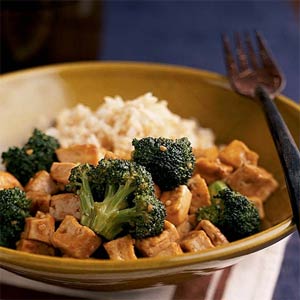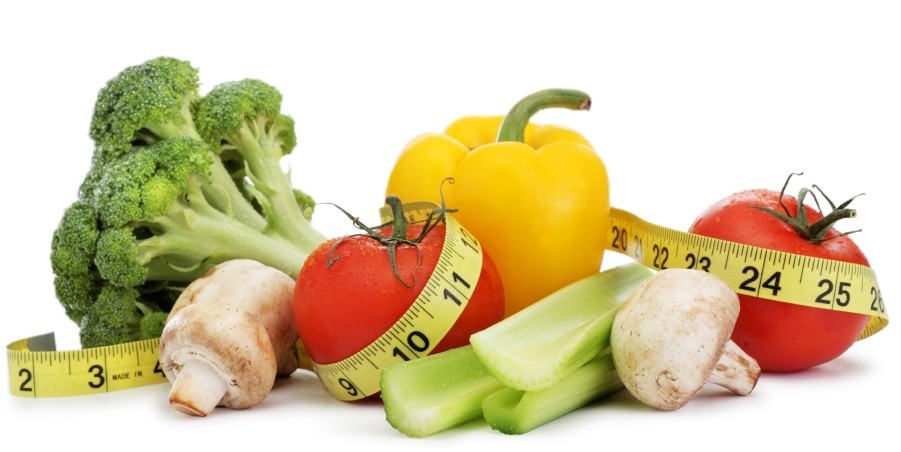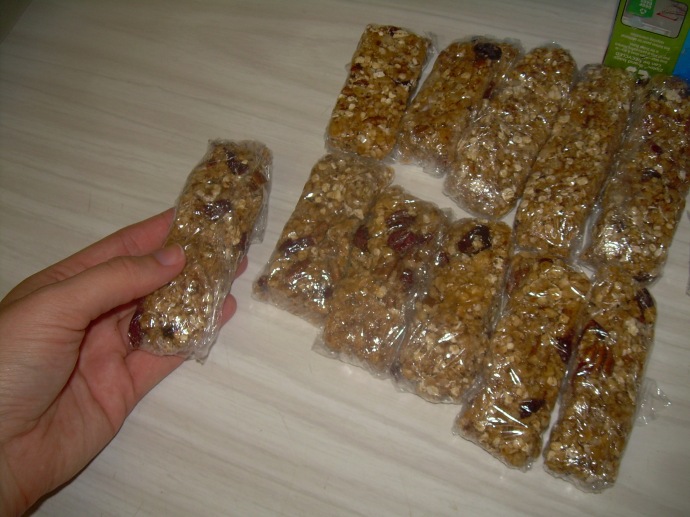
Vegetarian diets seem to be increasing in popularity among adolescents and adults. People choose to adopt a vegetarian diet for many different reasons. It may be for philosophic, religious, ecologic, economic, or health reasons. Interestingly enough, studies of Seventh Day Adventists indicate that the diet (of lacto-ovo vegetarianism) results in lower rates of type 2 diabetes, certain types of cancer, heart disease, strokes, and gallbladder disease.
For whatever reason that a person chooses to become a vegetarian, they should be rest assured that it is still possible to meet all of their daily requirements for different minerals, vitamins, and for macronutrients like protein (which is often of most concern to people, especially parents of teen or adolescent vegetarians). Of course, sometimes supplements will be necessary in order to make up for the decreased intake of some nutrients. This all depends on what type of vegetarian diet they’ve adopted, and I’ve listed the types below, in order from “most relaxed” to “most strict”.
Flexitarian – This could describe anyone from the individual who occasionally eats vegetarian meals, to the individual who consumes red meat only a few times a month.
Pescatarian – does not eat meat or poultry, but does consume fish, eggs, milk, and dairy products.
Lacto-Ovo-Vegetarian – does not eat meat, fish, or poultry, but does consume milk, dairy products, and eggs.
Lacto-Vegetarian – does not eat meat, fish, poultry, or eggs, but does consume milk, cheese, yogurt, and other dairy products.
Vegan (“True Vegetarian”) – does not eat any food of animal origin (doesn’t eat eggs, milk, cheese, butter, yogurt, honey, gelatin, or carmine– the food coloring agent “natural red 4”). If someone also follows a true vegan lifestyle in addition to a vegan diet, they won’t purchase anything made from animal products either, such as leather and fur.
Nutrients to Keep an Eye On:
Like I mentioned previously, vegetarian diets of all degrees can be healthy and safe for infants, children, adolescents, and adults, with careful nutritional planning. Key nutrients to keep an eye on include calcium, iron, zinc, vitamin B12, vitamin D, and omega-3 fatty acids.

Vegetarian Broccoli-Tofu-Stirfry- thank the tofu for the calcium
Calcium – Vegetarians who don’t consume milk or dairy products (vegans) may have low calcium intakes. Adults ages 18-50 need 1000mg of calcium a day, which is going to be necessary for bone and teeth structure and function, muscle contraction, blood vessel function, and the proper secretion of hormones and enzymes. While there are non-dairy products that contain calcium, the calcium found in some vegetables are inactivated by the presence of some oxalates, so a spinach salad every day may not be enough to provide that 1000 mg for optimal health, as the calcium bioavailability in spinach is low.
It’s also worth noting that there are more and more “calcium-fortified” food items on the market. In fact, the Sara Lee Classic 100% Whole Wheat sliced bread I buy has 250 mg of calcium in 2 slices of bread, or 25% DV. Non-dairy milks such as almond, soy, and coconut milk are a great source of calcium as well (typically fortified with 25-45% DV calcium).
Vegan sources of calcium:
- Tofu (regular, 1/2 cup) = 434 mg
- Fortified soymilk (1 cup) = 368 mg
- Collard greens (cooked, 1 cup) = 357 mg
- Turnip greens (cooked, 1 cup) = 249 mg
- Rhubarb (cooked, 1 cup) = 212 mg
- Black-eyed peas (boiled, 1 cup) = 211 mg
- Spinach (cooked, 1 cup) = 200 mg
- Calcium-fortified orange juice (1 cup) = 200 mg
- Blackstrap molasses (1 tbs) = 172 mg
- Baked beans (canned, 1 cup) = 154 mg
- Refried beans (canned, 1 cup) = 141 mg
- Kale (cooked, 1 cup) = 94 mg
- Almonds (1 oz) = 70 mg

Iron-fortified cereal with vitamin C containing orange juice
Iron – Iron plays an essential role in transporting oxygen in your blood from your lungs to the rest of your body. There are two types of iron- heme iron found in animal products and non-heme iron found in plant products. Heme iron is more readily absorbed by the body than nonheme iron, so vegetarians have a dietary reference intake (DRI) for iron about 1.8 times higher than do non-vegetarians. Vegetarian men and vegetarian post-menopausal women should aim for 14 mg a day and pre-menopausal vegetarian women should aim for 33 mg of iron per day.
There are mixed messages when it comes to the intake of iron in vegetarian diets versus non vegetarian diets. Krause’s Food & Nutrition Therapy textbook says that vegetarian diets tend to be lower in iron intake than diets of those who consume meat and animal products, however the Academy of Nutrition and Dietetics Nutrition Care Manual says that vegetarians consume more dietary iron than nonvegetarians. Despite this inconsistency, it is known that the incidence of iron deficiency anemia is similar in both vegetarians and non vegetarians.
While the iron found in plant products and fortified grains (nonheme iron) is less readily absorbed by the body, it is also typically accompanied by the intake of ascorbic acid (vitamin C), which increases the bioavailability of the iron. For this reason, it’s recommended that vegetarians eat foods containing vitamin C along with iron-containing foods. Vegetarians can also increase the amount of iron in your foods by cooking foods in cast iron skillets, as some of the iron will absorb into the foods, especially acidic foods like tomato sauce.
Vegan sources of iron:
- Fortified cereal (1 cup) = 1-22 mg
- Enriched white rice (1 cup) 9.73 mg
- Pumpkin & Squash seeds (1/4 cup) = 8.5 mg
- Baked beans (1 cup) = 8.2 mg
- Spinach, cooked (1 cup) = 6.43 mg
- Enriched bagel (4″) = 5.38 mg
- Refried beans (1 cup) = 4.18 mg
- Potato skin (from 1 potato) = 4.08 mg

Wild rice, good source of zinc
Zinc – Zinc is a mineral that has many functions; it’s involved in the synthesis and degradation of major metabolites and nucleic acids, structure of proteins, intracelluar signals in the brain, transport processes, immune function, and expression of genetic information. Phew! The dietary reference intake (DRI) for zinc is 11 mg/day for males and 8 mg/day for females. However, like iron, animal sources of zinc have higher bioavailability than plant (legume, grain) sources because of the phytates that inhibit zinc absorption. Because of this, vegetarians consuming high levels of phytates are recommended to consume 50% more than the RDA.
Zinc is another mineral that is mainly found in animal products, so vegans and vegetarians need to keep an eye on their zinc intake, as a zinc deficiency can lead to delayed wound healing, skin lesions, impaired appetite and taste, and immune deficiencies. There’s good news though– many breakfast cereals and breads are fortified with zinc, and soy products may also be good sources of zinc. In fact, a quick peak in my pantry shows me that store-brand rice krispie cereal has 25% DV of zinc. Great!
Vegan sources of zinc:
- Wild rice, cooked ( 1/2 cup) = 2.2 mg
- Pecans (1 oz) = 1.28 mg
- Green peas, cooked (1 cup) = 1.21 mg
- Legumes (1/2 cup) = 0.8-1.3 mg
- Peanuts, dry roasted (1 0z) = 0.94 mg
- Spinach, frozen/cooked (1 cup) = 0.93 mg
- Bread, whole wheat (1 slice) = 0.54 mg

Nutritional yeast- it’s got your B12!
Vitamin B12 – Vitamin B12 is a vitamin that red blood cell growth and maintenance of the nervous system. However, Vitamin B12 is only found naturally in meat, eggs, and dairy. Vegans are at higher risk of developing megaloblastic anemia due to a Vitamin B12 deficiency. This could mean shortness of breath, tingling and numbness in fingers and toes, memory loss, dizziness, mood changes, loss of vision, impaired cell division, and permanent nerve damage. Another layer of complication is added to this as well, because the high levels of folate in vegan diets mask the damage done by a vitamin B12 deficiency. For this reason, vegans should get tested for a vitamin B12 deficiency by their doctor as well as make sure they have a consistent, reliable source of B12, such as fortified breakfast cereals, soy milk products, or supplements. Aim for 2.4 mcg of vitamin B12 per day – or 100% RDA. Check your food labels and look into supplementation if your intake of Vitamin B12 is low.
Vegan sources of vitamin B12:
- Nutritional yeast (1 tbs) = 5.3 mcg
- Soy milk products (1 cup) = 0.9-3.3 mcg
- Meat analogs (1 oz) = 0.5-1.2 mcg –> this is going to be your veggie burgers, fake meats, textured vegetable protein (TVP)
- Ready-to-eat cereals (1 cup) = 0.6-6.0 mcg

Fortified soymilk- excellent source of vitamin D
Vitamin D – Vitamin D is a prohormone which is essential for normal growth and development, especially key in the formation and maintenance of healthy bones and teeth. Vitamin D is synthesized by our skin when exposed to sunlight, however for those that spend most of their day indoors or those who live in cloudy areas of northern latitude, supplementation of Vitamin D through the diet may be necessary. The RDA for adults is 5-15 mcg per day.
Vitamin D is found naturally in fish, cow’s milk, eggs, and liver. Not very vegan. Fortunately, as the benefits of vitamin D continue to reach headlines, there is a growing amount of food that is being fortified with vitamin D and being advertised as such.
Vegan sources of vitamin D:
- Soy or rice milk (1 cup) = 1-3 mcg
- Orange juice (1 cup) = 2.5 mcg
- Margarine (1 tsp) = 1.5 mcg
- Ready-to-eat cereal (1 oz) = 0.5-1 mcg
If your doctor recommends you take a vitamin D supplement, you’ll probably want to go with Vitamin D2 instead of Vitamin D3 supplements, as D3 is made from animal skin and D2 is made from yeast. However, D2 is not utilized as effectively as D3 in the body, so vegans relying on vitamin D2 may need to consume 1.7x the RDI, or 25.5 mcg per day.

Flax seeds & ground flax seeds- great for omega-3s
Omega-3 Fatty Acids – Omega-3s are fatty acids that are required in the human diet, as the human body has no way of synthesizing omega 3-s internally. Essential fatty acids (omega-3 and omega-6) have numerous functions in the body and the health benefits of omega-3s are even more numerous. Omega 3s can help with inflammatory diseases, decrease the risk of heart disease, lower blood pressure, lower elevated triglyceride levels, reduce the inflammation involved in conditions such as rheumatoid arthritis, and improve symptoms of depression and dementia. Adequate intakes for omega-3 fatty acids in adults are 1.6 g/day for males and 1.1 g/day for females.
Omega-3s are plentiful in fatty fish and shellfish, but vegans have to find alternative sources.
Vegan sources of Omega-3 Fatty Acids:
- Flaxseed/flaxseed oil (one of the best options for vegans)
- Vegetable oils–canola, soybean, olive, hemp (1 tbs) = 0.9-1.2 g
- English walnuts (1/4 cup) = 2.3-2.7 g
- Soybeans, cooked (1 cup) = 1 g
- Pumpkin seeds

Vegetarian black bean chili…full of protein
But what about protein??
Chances are, if a vegetarian eats fish, eggs, milk, or dairy, they can easily get enough protein in their diet each day. In fact, although they consume less protein than their non-vegetarian counterparts, most vegetarians still meet or exceed their protein requirements each day (generally 0.8 g protein/kg body weight). So it’s really not a problem for most vegetarians, especially if they eat yogurt, cheese, milk, fish, and eggs. In addition, when vegetarian diets are found to be low in protein, it’s typically because the calories are too low as well. All they have to do is increase the calories eaten each day and the protein intake will raise to meet requirements.
Vegans, on the other hand, consume most of their protein from bean and fortified cereal sources. The fiber and polyphenic compounds found in these can affect protein digestibility, so often their protein needs increase to 1.0 g protein/kg bodyweight. This still doesn’t warrant much cause for concern as well, as long as the calorie needs of the individual are being met.
Vegan sources of protein:
- Legumes
- Soy products
- Grains
- Nuts/nut butters (peanut butter, almond butter, hazelnut spread)
- Seeds/seed butters
- Meat analogs (TVP, fake meat, veggie burgers, etc)
So there you go! Vegetarianism in a (large) nutshell. The important thing to remember here is that if you switch to a vegetarian or vegan diet, it doesn’t necessarily mean you’re still eating healthy. There’s a lot of vegan and vegetarian junk food out there, so you still need to be aware of how much of what you’re putting in your body. Typically 10-15% of your calories from protein, 45-65% calories from carbohydrates, and 20-30% calories from fat. In addition to keeping an eye on your macronutrient composition, you’ll want to keep an eye on your calcium, vitamin D, vitamin B12, iron, zinc, and omega-3 daily intake. You may be able to reach your daily recommendations for all of these vitamins and minerals through a carefully and consciously planned diet, but oftentimes you might need to speak to a health professional concerning supplement use.















